
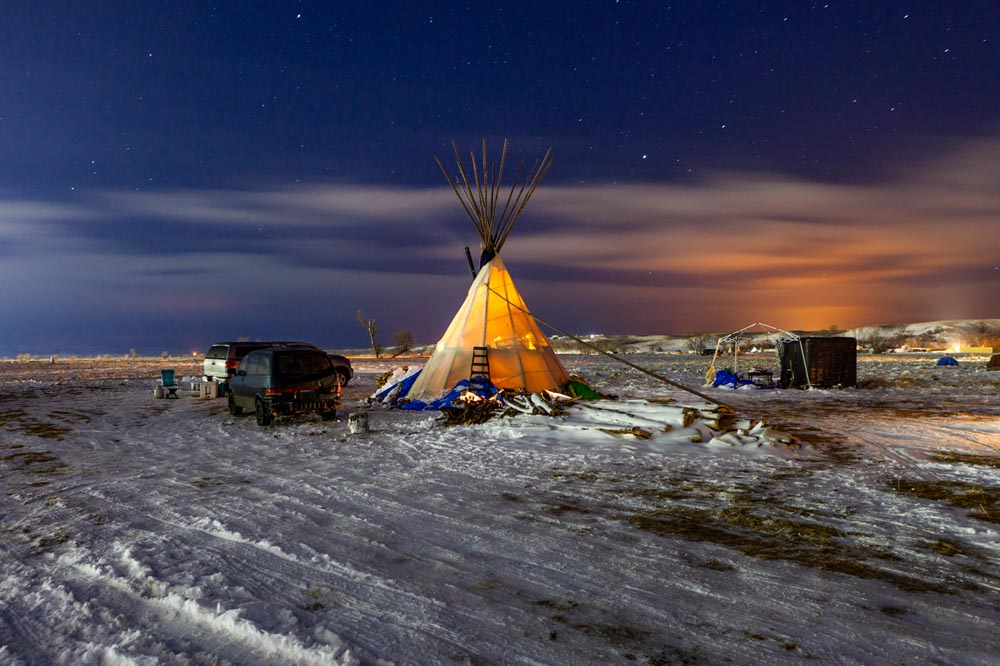
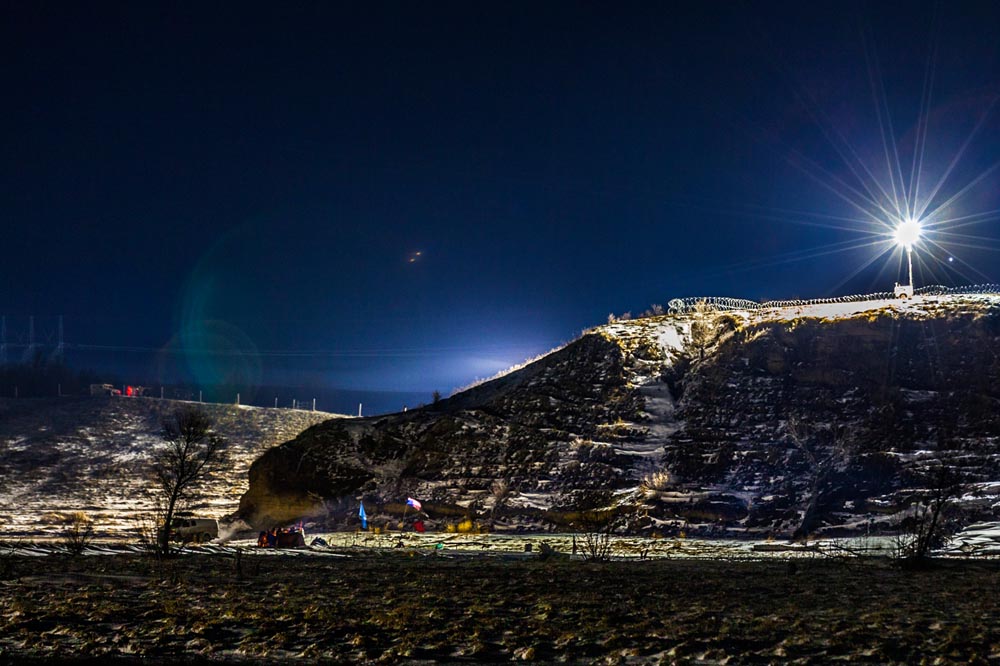
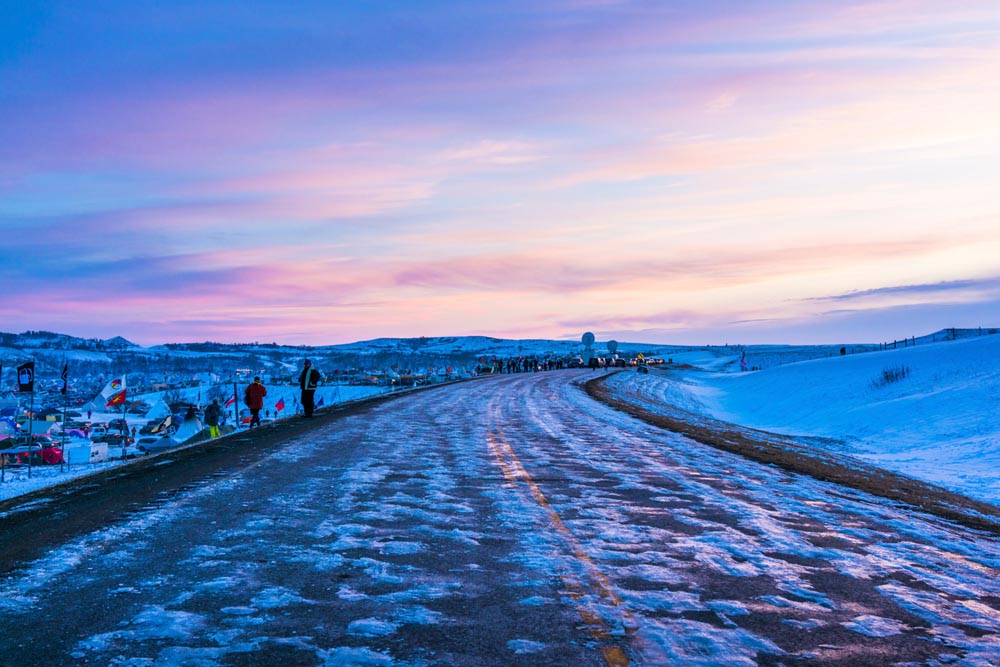
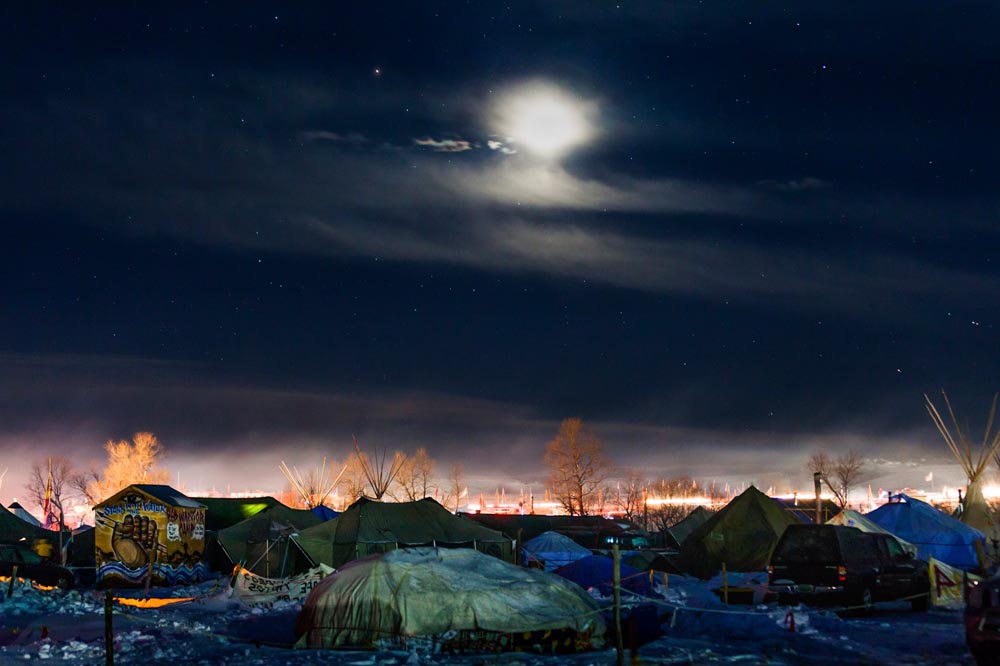
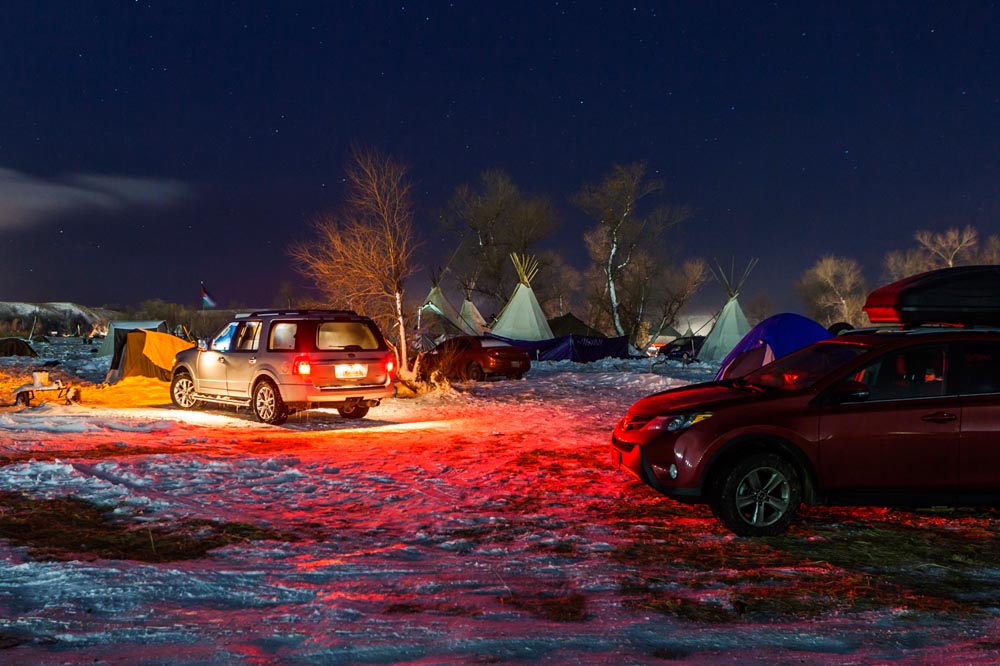







“History, history! We fools, what do we know or care? History begins for us with murder and enslavement, not with discovery. No, we are not Indians but we are men of their world. The blood means nothing; the spirit, the ghost of the land moves in blood, moves the blood.” — William Carlos Williams, In the American Grain
“All things are our relatives; what we do to everything, we do to ourselves. All is really One.” — Black Elk Speaks
These photographs were taken in the Oceti Sacowin Camp on the Standing Rock Reservation in December of 2016 upon my return from the high arctic where I had just witnessed a dramatic example of accelerating climate change in the polar region of Svalbard. As ever higher levels of human-generated carbon continue to disrupt the global systems of climate, the attempt to persist in the use of fossil fuels has resulted in environmental and humanitarian devastation in the regions where such reserves are located. When I arrived at Standing Rock I found a fully militarized, public-funded police force brutalizing Native Americans, members of the Standing Rock tribe who were legally occupying land granted to them by treaty. The Sioux were leading a movement to protect their watershed, that section of the Missouri just up river from the reservation. The Dakota Access Pipeline had been originally slated to cross the Missouri north above Bismark, but the residents of that city did not want to risk jeopardizing their own water supply. The Army Corps of Engineers then rerouted the pipeline through Sioux land to the south, in some cases directly through sacred ground, burial sites, and ecologically sensitive areas. The police brutality was escalating and was so well documented that Amnesty International sent in a team of investigators as did several other international human rights organizations. It seemed painfully clear that the use of a police force to protect the profits of a corporation and its investors seemed the next logical step in the ugly odyssey of the fossil fuel energy industry—only this time the colonized people were US citizens. Many of the members of the Standing Rock Tribe who were risking everything to protect the Missouri watershed were direct descendants of the Standing Rock Sioux who were massacred by the US Army 150 years earlier just up the road from the Oceti encampment. History not only seemed to be repeating itself—weirdly, it seemed to many of us gathered together there that we were also witnessing our future, a future in which the idea of home, of identity on the basis of tribe or nation or watershed was being crushed under the juggernaut of global corporate greed.
For this series, I choose to focus on the illumination of the Sioux prayer camp by a two mile long bank of klieg lights set up by the Morton County Sheriff’s Department in an attempt to harass the people living in the camp by denying them the solace of darkness at night, one of a number of psychological warfare tactics employed by the security firm employed by the Sheriff’s Department, G4S, a recently renamed and retooled variation of Blackwater. Even though though the klieg lights were intended to disrupt the camp they mostly tended to reveal the the spectacle of North Dakota, a state once famously proud of its socialist leanings now turned Fossil Fuel Police State. The camp was devoted to peace and prayer, and the water protectors who performed prayers and rituals on “the front line,” country road 1806 which had been blockaded by the police to cut off supplies, were being subjected to full military aggression, to violations of human rights that would be classified as war crimes in international court. By no means were the klieg lights as brutal a tactic as some of the physical violence, but they were powerful in another sense in that they revealed the extremity of the police actions. I am a landscape photographer, not a war photographer—and yet in Oceti I felt the boundaries between these genres had disappeared. The lights blaring all night revealed the both beauty of the watershed’s topography and the violence of those who would exploit it. In “Turtle Island” you can see razor wire wrapped around a burial ground that was directly in the path of the re-routed pipeline. Were a militarized police force to drive into Bismark and wrap a local Christian church or a cemetery in razor wire so that it could then be bulldozed for the profit of a few wealthy shareholders, a profit that would hasten the demise of a stable climate—it undoubtedly would have caused a national uproar, but the US news media remained largely absent and failed utterly to cover the the worst atrocities occurring at Standing Rock. As a nation we have never fully confronted the painful fact that our founding depended upon the radical displacement of the continent’s indigenous people and because of this we are, as William Carlos Williams warned a full half century ago, doomed to suffer the consequences of our denial. Nations born of brutality and colonization will invariably turn that brutality upon themselves. They are inherently, morally unsustainable. The Dakota Access Pipeline crosses all the major rivers in the midwest—the Missouri, the Iowa, the Mississippi. The Standing Rock Sioux were attempting to protect water for everyone and everything, the indigenous inhabitants and the colonizers alike. Those who turned away, who did not protest, who believe that what was happening in North Dakota had nothing to do with them, are soon going to wake up to a landscape that has radically changed. As the climate continues to suffer destabilization, as the American rivers are systematically drained and poisoned, the descendants of the colonizers will soon discover that they have themselves been colonized from within. They will learn the fundamental truth that Black Elk speaks of so eloquently in Black Elk Speaks: all things are sacred and everywhere is the center of the universe.